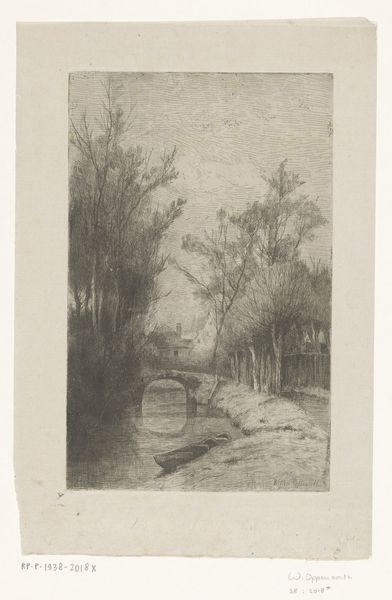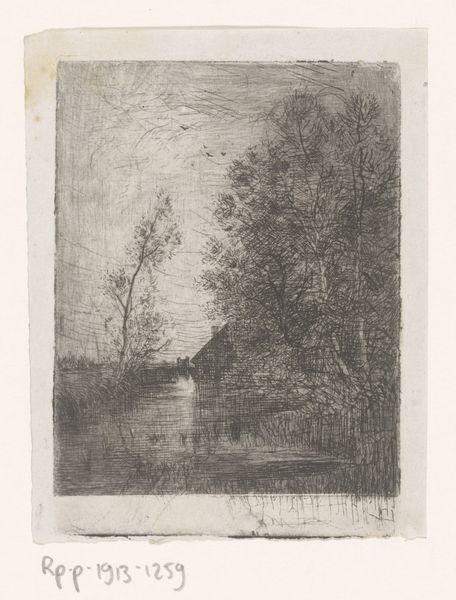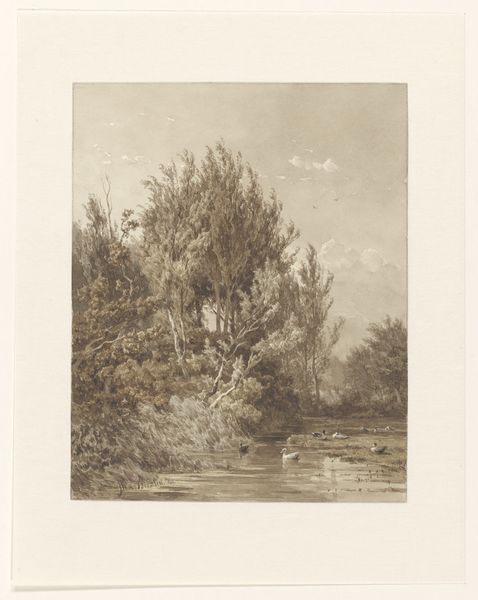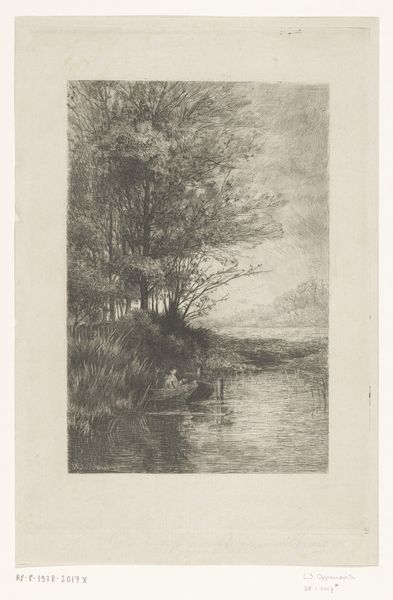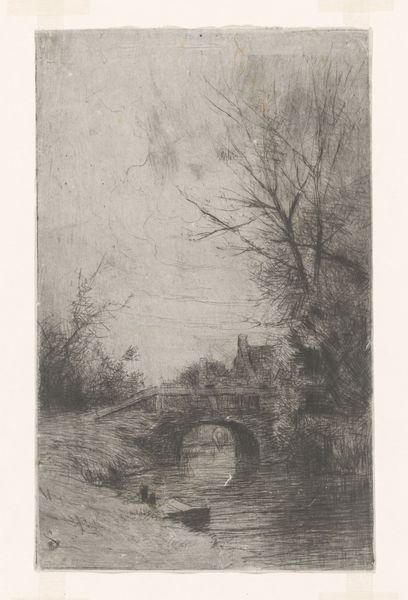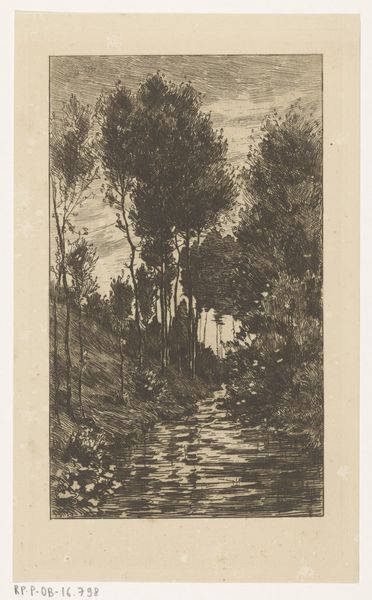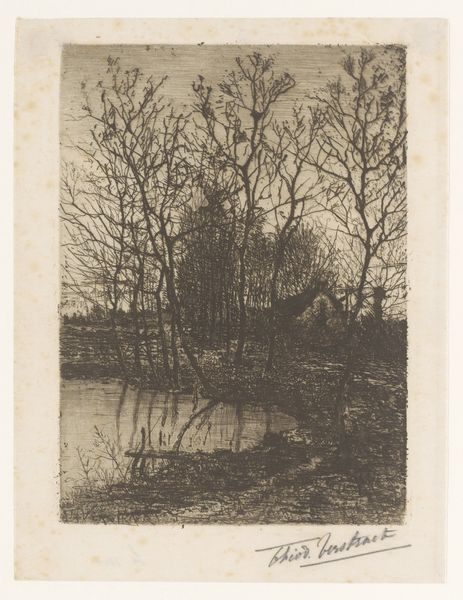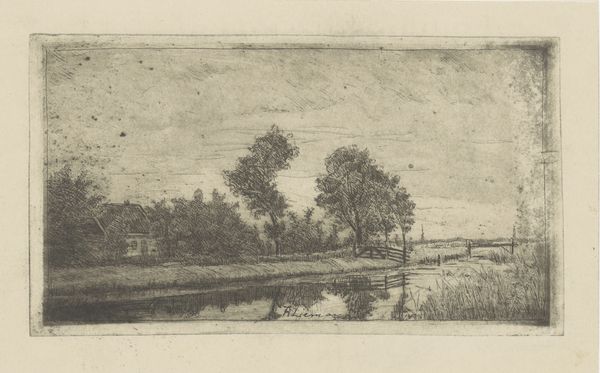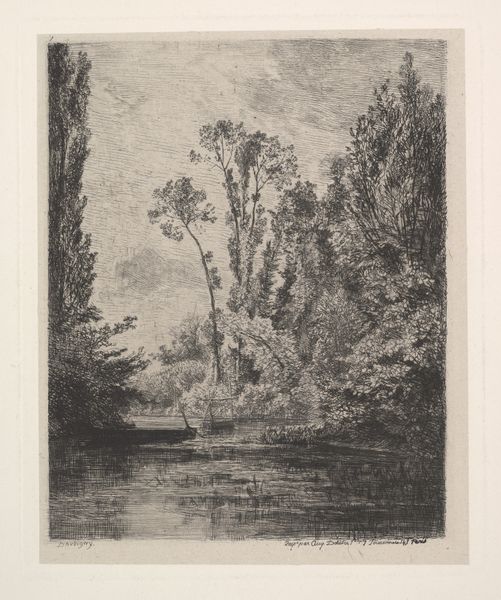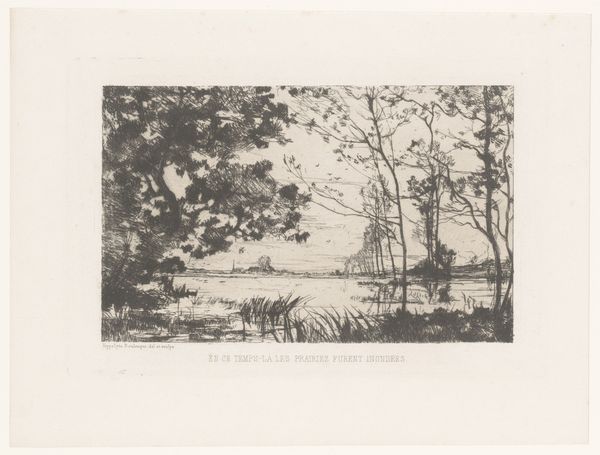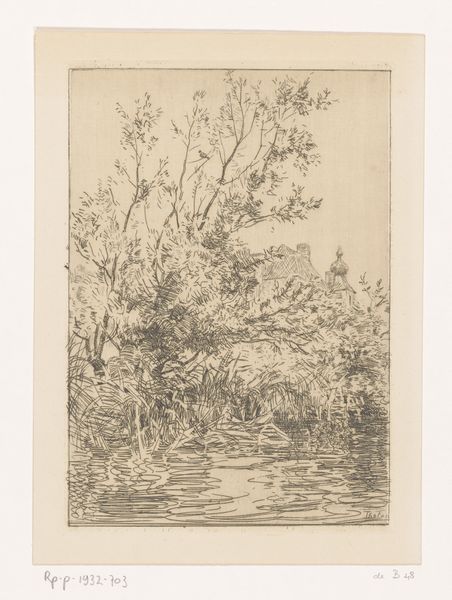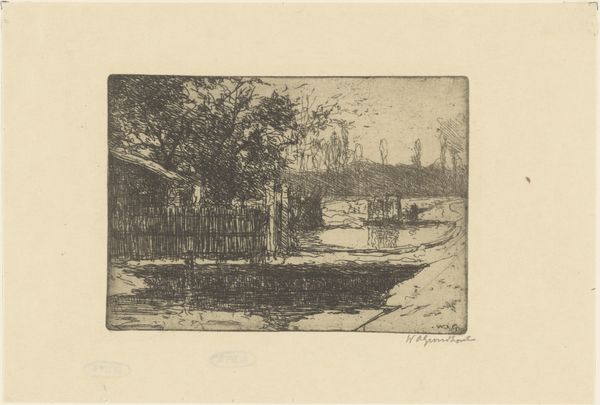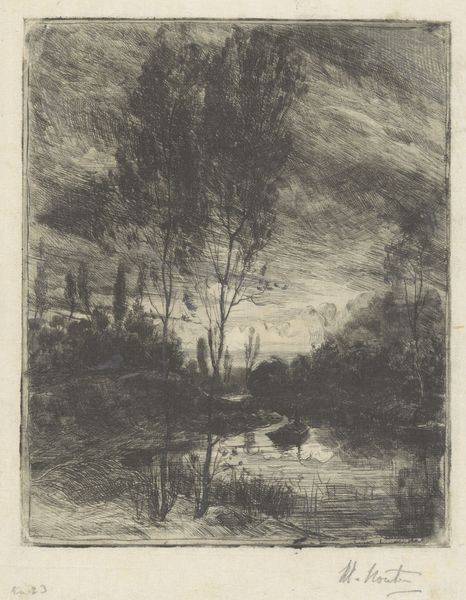
print, etching
# print
#
impressionism
#
etching
#
landscape
#
etching
#
realism
Dimensions: height 160 mm, width 109 mm
Copyright: Rijks Museum: Open Domain
Philip Zilcken made this etching, "Vieux Moulin en Gueldre," using metal, acid, and ink. The process of etching is fascinating. Zilcken would have coated a metal plate with a waxy, acid-resistant substance, then scratched an image into that coating. The plate was then immersed in acid, which bit into the exposed metal, creating lines. The longer the plate sat in the acid, the deeper the lines. The plate was then inked, and the surface wiped clean, leaving ink only in the etched lines. Finally, it was pressed onto paper. You can see the effect of this process in the image. The subtle gradations of tone, the delicate lines that define the trees and the mill, and the way the light plays across the water, all speak to Zilcken’s mastery of this intricate method. The beauty of etching lies in its ability to capture detail, and to suggest depth and atmosphere. Though it’s not a unique work, the labor and skill involved underscore that even a print can be a precious thing.
Comments
No comments
Be the first to comment and join the conversation on the ultimate creative platform.

